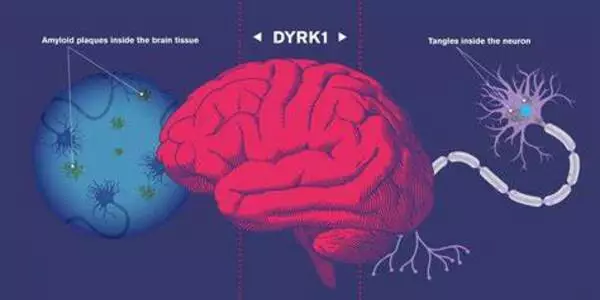Alzheimer’s disease is a complicated and multifaceted disease, and researchers were looking into many techniques, including as targeting beta-amyloid plaques, tau tangles, inflammation, and other potential pathways that may contribute to the disease’s genesis and progression. Clinical trials for potential cures were underway, and new discoveries were being studied on a regular basis.
In an animal model of Alzheimer’s disease, researchers from Université Laval and the University of Lethbridge were able to reverse certain cognitive signs. Their findings were published in the scholarly journal Brain.
“Although this has yet to be demonstrated in humans, we believe that the mechanism we have discovered constitutes a very interesting therapeutic target because it not only slows the progression of the disease but also partially restores certain cognitive functions,” says study leader Yves De Koninck, a professor in the Faculty of Medicine and researcher at Université Laval’s CERVO research center.
Our results do not imply that the loss of KCC2 causes Alzheimer’s disease. On the other hand, it does appear to cause an ionic imbalance leading to neuronal hyperactivity that can lead to neuronal death. This suggests that by preventing the loss of KCC2, we could slow down and perhaps even reverse certain manifestations of the disease.
Prof. De Koninck
Previous research has revealed that even before Alzheimer’s symptoms occur, brain activity is disturbed in patients who get the illness. “There is neuronal hyperactivity and signal disorganization in the brain. Our hypothesis is that a mechanism that regulates neuronal activity, specifically the one responsible for inhibiting neuronal signals, is disrupted,” explains the researcher.
The neurotransmitter GABA is the principal inhibitor of neuronal signals in the human brain. It works closely with a cotransporter, KCC2. “This is an ion pump located in the cell membrane that circulates chloride and potassium ions between the inside and outside of neurons,” Professor De Koninck recalls. Maintaining this ion pump in the neuron’s cell membrane could halt or reverse the disease.
“A lack of KCC2 in the cell membrane can result in neuronal hyperactivity.” KCC2 levels in the brains of deceased Alzheimer’s patients were shown to be lower in one investigation. “This inspired us to investigate the role of KCC2 in an animal model of Alzheimer’s disease,” the researcher adds.

Promising Results in Mice
To accomplish this, scientists employed mice strains producing a kind of Alzheimer’s disease. The researchers discovered that as these mice reached the age of four months, KCC2 levels declined in two areas of their brains: the hippocampus and the prefrontal cortex. These two regions are also affected in Alzheimer’s disease patients.
In light of these findings, the researchers turned to a chemical discovered in their lab, CLP290, which is a KCC2 activator that inhibits its depletion. In the near term, giving this chemical to mice who already had low KCC2 levels improved their spatial memory and social behavior. CLP290 protected them from cognitive deterioration and neuronal hyperactivity in the long run.
“Our results do not imply that the loss of KCC2 causes Alzheimer’s disease,” insists Prof. De Koninck. “On the other hand, it does appear to cause an ionic imbalance leading to neuronal hyperactivity that can lead to neuronal death. This suggests that by preventing the loss of KCC2, we could slow down and perhaps even reverse certain manifestations of the disease.”
CLP290 cannot be utilized in humans for a number of reasons. Professor De Koninck’s team is looking for new KCC2-activating compounds that would be well tolerated by Alzheimer’s patients.
“We have created new molecules that are currently being tested in our laboratory. In tandem with this research, we are investigating medications used for causes other than Alzheimer’s in humans to see how they affect KCC2. “Repositioning an existing drug would expedite work on this new therapeutic avenue,” says the researcher.
















